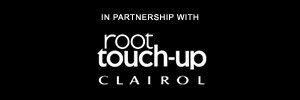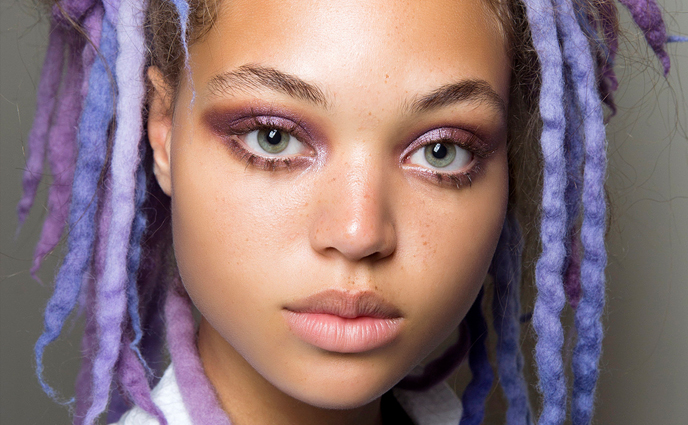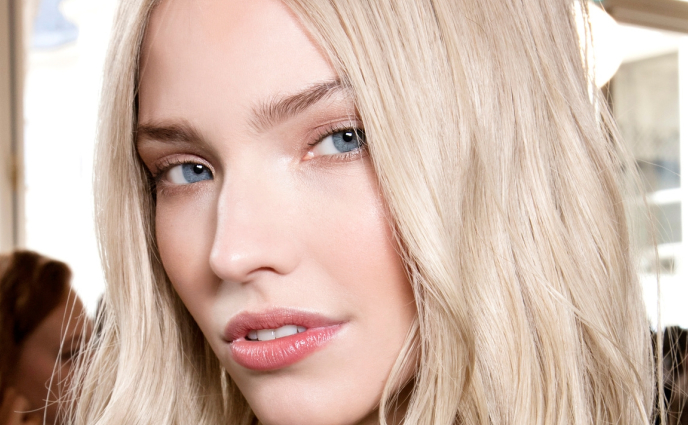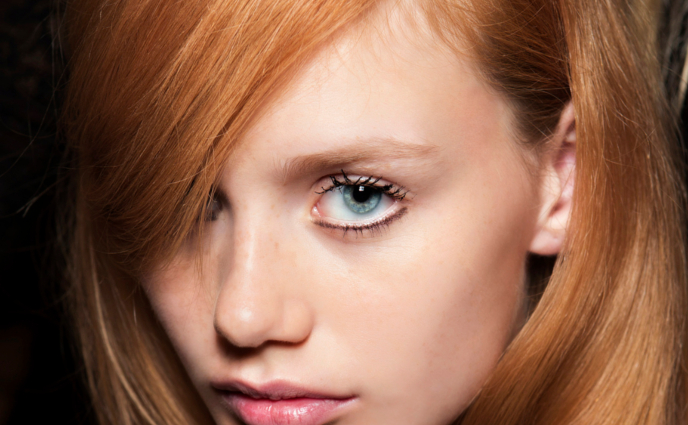You might not love the hair color you were born with, but it's a good indicator of what hair colors will suit you. Experts say that the most flattering hair colors are within two shades of your natural color. For instance, a dark blonde could totally work pale blond or strawberry blond hair; likewise, someone with medium brown hair may look great as a deep brunette.
Colorist Nicole Berry of George the Salon in Chicago advises being conservative if you're using at-home hair color. "Don't go more than one shade darker or one shade lighter using at-home hair color," she says.
Your natural color may also give you a clue about whether to pick a warm or cool hair color. If you're a light, caramel-y brown, you would probably be an amazing golden blonde. If you have true blue-black hair, you could probably pull off an espresso brown.
Colorist Nicole Berry of George the Salon in Chicago advises being conservative if you're using at-home hair color. "Don't go more than one shade darker or one shade lighter using at-home hair color," she says.
Your natural color may also give you a clue about whether to pick a warm or cool hair color. If you're a light, caramel-y brown, you would probably be an amazing golden blonde. If you have true blue-black hair, you could probably pull off an espresso brown.
Figuring out your skin's undertone may not be simple, but it's a must-do before you settle on a hair color. "To pick a flattering hair color, first decode whether your skin tone is cool or warm," says AJ Lordet, master colorist at Pierre Michel Salon in New York City. "If your skin tone is cool, you have pink, olive-y tones. If warm, you have yellow/gold tones."
Experts traditionally advise choosing a hair-color undertone that matches your skin's undertone. "If someone's hair color is naturally ashy and they have a lot of red in their skin, they may want to keep hair on the more natural or cool side," says Berry. "If they have a lot of yellow in their skin, something ashier or too light may wash them out."
To figure out your skin's undertone, Lordet recommends the vein test: "Blue, purply veins mean cool skin tone; green veins, warm," she says. Next, think about what clothing and jewelry colors suit you: Cool-toned skin looks great against white and silver tones, while warm complexions are flattered by off-white and yellow-gold. Your makeup can offer clues, too. If the name of your shade of foundation, powder or BB cream contains words like "golden" or "peach," you're probably warm; "pink" or "porcelain" might indicate a cool complexion.
Still can't make up your mind? Your skin might have a neutral undertone, which means you'd look great with a cool or warm hair color.
Experts traditionally advise choosing a hair-color undertone that matches your skin's undertone. "If someone's hair color is naturally ashy and they have a lot of red in their skin, they may want to keep hair on the more natural or cool side," says Berry. "If they have a lot of yellow in their skin, something ashier or too light may wash them out."
To figure out your skin's undertone, Lordet recommends the vein test: "Blue, purply veins mean cool skin tone; green veins, warm," she says. Next, think about what clothing and jewelry colors suit you: Cool-toned skin looks great against white and silver tones, while warm complexions are flattered by off-white and yellow-gold. Your makeup can offer clues, too. If the name of your shade of foundation, powder or BB cream contains words like "golden" or "peach," you're probably warm; "pink" or "porcelain" might indicate a cool complexion.
Still can't make up your mind? Your skin might have a neutral undertone, which means you'd look great with a cool or warm hair color.
If you want to emphasize your eyes -- who doesn't? -- the right hair color can make your eyes look bright and beautiful without a stitch of makeup.
Berry uses a client's eye color to help her find a hair color with the most flattering undertone. "If the client has warmer brown eyes, then pick rich colors that will complement their eye color," says Berry. "If they have green or blue eyes, typically cooler hues look better."
Contrasting your hair color with your eye color can make both shades look amazingly vivid. For example, coppery red and pastel peach hair contrast beautifully with blue eyes; bluish-red and pink hair make green eyes pop.
Berry uses a client's eye color to help her find a hair color with the most flattering undertone. "If the client has warmer brown eyes, then pick rich colors that will complement their eye color," says Berry. "If they have green or blue eyes, typically cooler hues look better."
Contrasting your hair color with your eye color can make both shades look amazingly vivid. For example, coppery red and pastel peach hair contrast beautifully with blue eyes; bluish-red and pink hair make green eyes pop.
Who are your celebrity doppelgangers? Use them to help ID your perfect hair color. Look up photos of women who resemble you in skin tone and eye color and see what hair colors and tones look great on them.
Save some pics on your phone, then bring them along to your salon appointment -- or your trip to the drugstore, if you're DIYing -- to guide your hair-color choice.
Save some pics on your phone, then bring them along to your salon appointment -- or your trip to the drugstore, if you're DIYing -- to guide your hair-color choice.
Getting a new hair color is one thing; maintaining it is another story. The more your chosen color contrasts with your natural color, "the more upkeep you will need to do," reminds Lordet. "So keep that in mind." A natural blonde with rose gold highlights may need to hit the salon only once every eight to 10 weeks for touch-ups. But a natural brunette with platinum blond color will require much more maintenance (read: monthly salon appointments and money galore).
If you're not up for a major commitment, make a less extreme change to your overall color that you can maintain with at-home color, or consider partial highlights. A few foils around the hairline or some subtle balayage can help you change up your hair game without making you a hostage to your hairstylist.
If you're not up for a major commitment, make a less extreme change to your overall color that you can maintain with at-home color, or consider partial highlights. A few foils around the hairline or some subtle balayage can help you change up your hair game without making you a hostage to your hairstylist.






